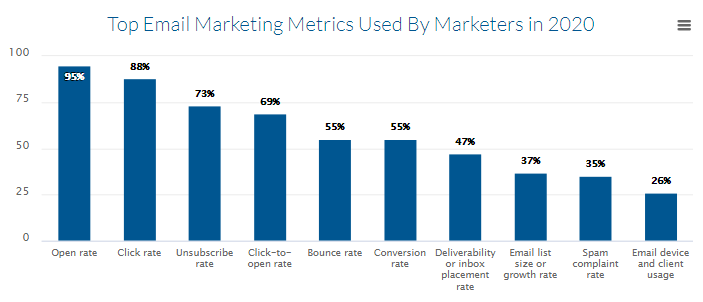Database marketing is not only collecting information about a customer. Understanding consumer behavior is an important component of database marketing. When a marketer learns a customer’s behavior, he or she can offer solutions that are tailored to that customer. Tutorials, registrations for events and webinars, videos, a specific product, or a service are examples of such types of solutions. That is why it is said that data is everywhere, you must know the right way to add intelligence to the databases.
The data offered by your database marketing software is all measurable data; data that can assist you in making informed decisions regarding the future of your marketing and whether you’re on track to meet your objectives. Because most small firms have little time for reporting, it’s critical to maintain all processes simplified and efficient.
Enhancing Database Marketing and Measuring ROI
There is a simple formula for measuring the ROI of any marketing campaign that you can also apply on database marketing. The formula is
ROI = {(Profit from the investment – cost of investment)/cost of investment}
The game of database marketing, however, is not just about the financial returns, but also on how well the marketing campaign is working for you. Let us elaborate [x] factors affecting database marketing and its ROI.
1. Set the goal of your campaign right
One of the most common mistakes made by email marketers is to start an email marketing campaign without a defined goal in mind. So, before you start writing your email campaign, consider and answer the following question: What do you want to achieve with your marketing efforts? How can you get more subscribers? Do you want to generate leads? Or do you want to turn leads into customers?
Marketers also make the mistake of expecting every email to generate income. Each campaign is distinct in terms of the objectives it seeks to achieve. You may, for example, send an email to re-engage with your customer without making the purchase, or purchasing at a later date.
2. Align your goal with the KPIs you want to measure

Source: Finances Online
After you’ve identified your objectives, you’ll need to devise tactics to reach them. With the support of Key Performance Indicators, you may create strategies (KPIs). Simply increasing positive KPIs while reducing negative KPIs is the key to database marketing success. Marketers’ most often utilized KPIs are:
a. Open rate
The open rate, which represents the number of email subscribers who receive your emails, is one of the most trustworthy email marketing KPIs. The formula is as follows:
Open rate = {(Number of emails opened) / (Number of emails sent – Number of emails bounced)} x 100
b. Click rate
The percentage of email recipients who clicked on one or more of the email’s links is known as the click-through rate. The formula is as follows:
CTR = {(number of emails clicked / number of emails delivered) x 100}
c. Unsubscribe rate
The percentage of recipients on your list who unsubscribe after receiving or opening your email is known as the unsubscriber rate. It is calculated as follows:
Unsubscribe rate = {(number of unsubscribes / number of emails delivered) x 100}
d. Bounce rate
The percentage of subscribers’ email addresses that did not receive the intended email is known as the bounce rate. It is calculated as follows:
Bounce rate = {(number of emails bounced / number of emails sent) x 100}
e. Conversion rate
The percentage of your receivers who have opened your email, clicked on the link, and taken the intended action, such as purchasing a product or service, enrolling for a demo, or downloading a pdf, form the conversion rate. It is calculated as follows:
Conversion rate = (Number of people who completed the desired action ÷ Number of total emails delivered) x 100
f. Deliverability rate
Email delivery serves as the cornerstone of your email marketing campaign. The deliverability rate is calculated as follows:
Deliverability Rate = {(Number of emails sent – Number of emails bounced) ÷ (Number of emails sent)} x 100
g. Spam complaint rate
Your emails may be marked as spam by some of your receivers. This is calculated using your spam rate, which is the percentage of your emails that have been flagged as spam. The formula is as follows:
Spam rate = {(number of spam complaints / number of emails delivered) x 100}
These KPIs guide marketers in their campaigns and enhance the ROI.
3. Frequency of your KPI evaluation
Different KPIs allow you to attain various objectives. Similarly, the frequency with which these measures are calculated varies. Some of them, such as the open rate and bounce rate, must be monitored on a daily basis. Weekly reports on click-through rates and spam complaints are feasible. And, once in a month, you can look at the open per customer and revenue per customer.
4. Seasonal impact on business
When estimating your ROI, remember to factor in broader industry and seasonal events. Customer interaction may become slow in one season and faster in another. Taking external events into account can aid in the planning of future campaigns.
Summary:
To measure the ROI of your database marketing, you must keep in mind to align the most important KPIs to your marketing goal. Also, you must be clear about when to evaluate your KPIs. Keeping seasonal effects into consideration is also important to derive meaningful insights.



